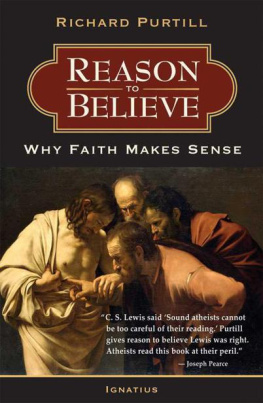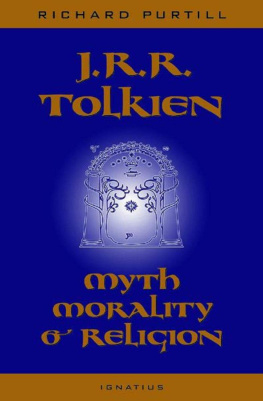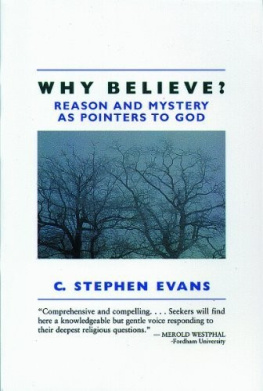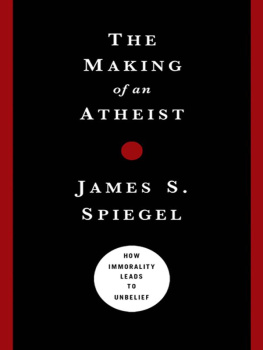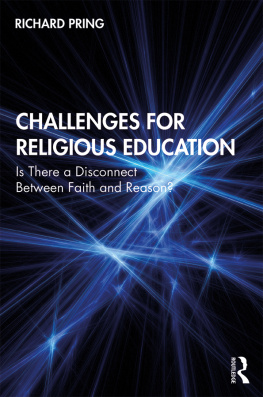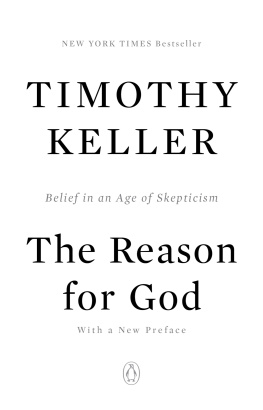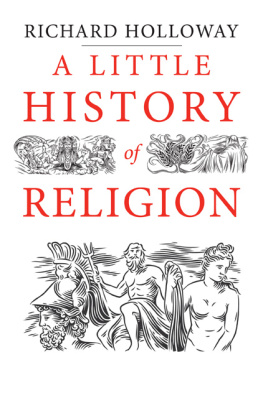REASON TO BELIEVE
RICHARD L. PURTILL
REASON TO BELIEVE
Why Faith Makes Sense
IGNATIUS PRESS SAN FRANCISCO
Original English edition:
1974 by William B. Eerdmans Publishing Company
New edition published by permission of the author
Cover art: Incredulity of Saint Thomas by Caravaggio
Scala / Art Resource, New York
Cover design by Riz Boncan Marsella
2009 by Richard L. Purtill
All rights reserved
Published in 2009 by Ignatius Press
ISBN 978-1-58617-088-2
Library of Congress Control Number 2008926718
Printed in the United States of America
To PAUL MAGNANO
Priest, Philosopher, Friend
and
to LILIA CASTLE
Teacher, Philosopher, Friend
Contents
I. Objections
II. Reasons
III. Revelation
Appendixes
Preface to the New Edition
Reason to Believe The original publication of Reason to Believe led to invitations to lecture at many universities, from Rhode Island to California, and to many lasting friendships with people interested in the philosophy of religion, both philosophers and nonphilosophers, clerics and laymen. I pursued my interest in philosophy of religion in my later career, which I combined with an interest in logic, ethics, and metaphysics.
Many of my later papers in philosophy of religion were on rather technical points, of interest only to professional philosophers. For this second edition, I have chosen to add a couple of related essays (see the appendixes) that I think illuminate my later thought on the subject. While I would still stand behind everything in Reason to Believe, the first essay provides a close examination of the idea of redemption in Christianity, and the second essay details some early influences on my thought and how they caused me to think of some of the recent history of the Church.
The first of these essays is Justice, Mercy, and Atonement, an earlier version of which was read at Notre Dame University. The second, Chesterton, the Wards, the Sheeds, and the Catholic Revival, was read at Seattle University and gives some idea of how my interest was first aroused in philosophy of religion and in conveying it to nonphilosophers. I did a similar thing in the second edition of Lord of the Elves and Eldils: Fantasy and Philosophy in C. S. Lewis and J. R. R. Tolkien, adding two extra essays to the main book.
Over the years, I have received a number of appreciative comments on Reason to Believe. This edition, which includes new references to current editions of books cited, as well as a bibliography for further reading, will, I hope, get the same reaction from new readers as the original edition did.
Richard Purtill
Bellingham, Washington
Introduction
This is a book about philosophy of religion. Since philosophy and religion are both words of many meanings, I will begin by trying to clarify the two terms.
Philosophy, as it is understood by most contemporary philosophers, has the following characteristics.
1. An effort is made to state the point under discussion as clearly and understandably as possible. Thus a concept may be defined or explained, various possible interpretations of a thesis or statement may be discussed, an argument may be laid out formally or informally, and the relation of its premises to its conclusion discussed. Philosophers characteristically ask, What do you mean?
2. An effort is made to examine the point under discussion critically. Thus assumptions may be brought out into the open and examined, possible objections to a thesis may be stated as fairly as possible, and counterarguments may be invented or drawn from the arguments of opponents. Philosophers characteristically ask, What are the objections?
3. An effort is made to decide questions on the basis of arguments. Arguments for a thesis may be shown to be valid and their premises true. Counterarguments may be refuted or shown to be irrelevant. Definite conclusions may be reached, or it may be concluded that there is no conclusive argument for or against a position. Philosophers characteristically ask, How can you show that?
The above concerns are characteristic of philosophical method. When applied to trivial or specialized subject matter, philosophical method may not lead to philosophy in the full sense. Thus we must add to the above list something about subject matter.
4. The subject matter of philosophy can be roughly divided into logic and epistemology, which investigate the grounds of our knowledge; ethics, political philosophy, and aesthetics, which investigate questions of value; and metaphysics, which investigates questions about man, the universe, and God. Typical philosophical questions are, Do we know anything? Do we have free will? Does God exist? Is there an objective standard of morality? Notice that dogmatic answers to such questions do not constitute philosophy. The answers must be supported by means of the philosophical method described above.
These four characteristics can be observed in the work of the great philosophers of the West (for example, Plato, Aristotle, Aquinas, Scotus, Hume, Berkeley, Descartes, Spinoza, Kant, Hegel, Mill, Peirce, Moore, and Wittgenstein), while it is not certain that they can be observed in any Eastern philosopher. There are also some philosophers in the Western tradition to whom these criteria do not clearly apply (for example, Nietzsche and Schopenhauer). Thus the sort of philosophy we have described is sometimes called analytic philosophy rather than simply philosophy. It should be understood, however, that analytic philosophy thus understood is a very broad term and is intended to apply to the whole history of philosophy.
Religion can be defined so widely as to mean whatever a man is deeply concerned about, but it is more useful to restrict the term to its primary meaning of belief in a divine or superhuman power or powers, to be obeyed and worshiped as the creator(s) and ruler(s) of the universe. As this definition suggests, religion can be monotheistic, holding belief in one God, or polytheistic, holding belief in more than one God. There is also the view called pantheism, which holds that in some sense everything is divine or shares in divinity. There are two main nonreligious views: agnosticism, which holds that we do not know that any religious view is true, and atheism, which holds that we know that every religious view is false. We can, of course, distinguish various kinds of pantheism and panentheism (God is the world vs. God includes the world) and varieties of agnosticism (we cannot know vs. we do not as a matter of fact know).
Most readers of this book will not regard polytheism in its various forms as a serious possibility, though some may be tempted by the view that there are two Gods, a good God and an evil God. This view, which is called dualism, is suggested by the existence of evil in the world, and it will be discussed later in connection with the problem of evil. A few people today are impressed by some form of pantheism, especially as it appears in one of the Eastern religions. We will discuss pantheism later in connection with ideas and arguments about the existence and nature of God.
Most people in the Western world, however, will have been influenced in their religious views by traditional Christian monotheistic religion. Some may agree with this religious tradition, while others may disagree; still others may partly agree and partly disagree. But most people brought up in this country or in countries of similar history and tradition will have formed their ideas about religion on the basis of the Christian religious tradition. For this reason, it seems appropriate to concentrate most of our attention on attacks on and defenses of monotheism as understood by Christians. Of course, Christians differ among themselves in their views about God, but it seems reasonable to begin with what might be called the traditional Christian idea of God as the Creator of the world, all-powerful, all-knowing, perfectly good, able to interfere miraculously with the course of nature, and able to reward or punish human souls for deeds done before their death. Whether this traditional account must be abandoned or seriously modified in the face of criticism is one of the main questions we will consider.
Next page
